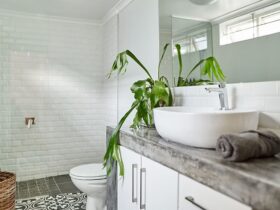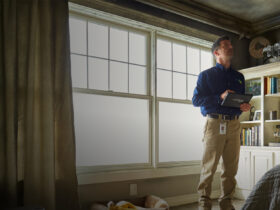Looking to make the most out of the extra space you have in your home? Adding a home theater may be one of the best ways to use an extra room.
We all love watching TV, movies, sports, and playing video games. But small TVs lack power and inspiration.
Investing in a home theater setup will take your viewing to the next level. With the right home theater layout, screen, lighting, and seating, you’ll feel like you’re in a movie theater every day.
Wondering how to design a home theater? It’s not hard, but there are a few key considerations. Keep reading our home theater interior design tips below, so you can get started outfitting your own personal theater.
Benefits of a Home Theater
If you love the experience of going to a movie theater, watching on the big screen, enjoy surround sound, and lounging in ultra-comfortable chairs, then a home theater is for you.
Movie theaters are getting more and more expensive. If you visit one a couple of times per month, you are better off building out your home theater to save money over the long run.
Or if you frequently go out to the sports bar to watch the game, you know how expensive your sports habit is. Save money on overpriced drinks, appetizers, and tips by watching the game from home.
Plus, when using a home theater, you can eat and drink whatever you want. That means wine, beer, cocktails, pizza, or whatever else you are craving. No more overpaying for soda and candy when you can enjoy real food at home.
A home theater will make for the perfect date night spot, and you won’t even have to get a babysitter. Plus, with so many movies and shows coming out exclusively on streaming platforms like Netflix, Hulu, and Amazon Prime, you won’t even need to go see the latest blockbuster release.
Ready to start outfitting your home theater? The first step is choosing the right room.
Choosing the Right Room
If you have a home with multiple spare rooms, then count yourselves lucky. You get to devote one to exclusively function as a theater.
The ideal room will be one with little or no exterior lighting. The perfect option would be a room in your basement, as these often don’t have windows. This keeps external light out, making it much easier to set up a theater lighting system.
If you don’t have an extra basement room, try choosing a room with only one window, so it’s easy to cover up and block the light. And because you’ll be watching movies with powerful speakers, make sure it’s not next to, or directly under, anybody’s bedroom. Otherwise, you might be keeping them up all night.
It’s generally best if the door TV or projector can face the wall opposite the door so that the door is behind you when watching. Bonus points if the room is next to the kitchen for easy access to snacks and drinks. Though you can always add a mini-fridge to the theater.
Home Theater Setup
So what are you going to need in order to create a comfortable theater? Aside from an extra room, you’re going to need theater seating. This is totally personal preference.
Many people like the true theater-style lounging chairs. Make sure to get enough for the number of people you expect to use the theater. Otherwise, you can always use couches, recliners, or any other type of comfortable seating.
You’ll want home theater lighting systems that are easy to control, dim, and blackout all from a remote or an app on your phone, so you don’t have to get up constantly. Check out these perfect lighting ideas to get your creative juices flowing.
And of course, you need the screen and sound set up. Many people like choosing a large TV since they offer tons of functionality. For example, smart TVs give you a ton of streaming apps to choose from or even live TV, but limit screen size.
Those who prefer watching on one or two different platforms may opt for a projector, to maximize screen size. To truly enjoy a projector, you really have to control the ambient lighting in the room.
You’ll want surround sound speakers, as this gives you an authentic theater effect. And you’ll want it all connected so you can control it from your phone, or a remote while sitting down.
Home Theater Layout
The layout of your home theater is pretty straightforward. You’ll have one large, empty wall that will become your screen. You can either mount your large TV to this wall or have your projector using this wall to display the movie.
Alternatively, you can mount a projector screen to provide a slightly cleaner viewing experience.
You’ll want most of your speakers to be located along this wall, under the screen. But then you’ll want to install additional speakers on the ceiling, in the upper corners of the room, and behind the chairs for a full effect.
If using individual chairs, make sure they are arranged in a cascading pattern, so that those in the second row still get a full view of the screen, rather than staring at the back of the chair in front of them.
You can also construct a basic platform to elevate the chairs in the rear, simulating a real movie theater, so they get a full view of the screen that way.
More Home Theater Design Tips
To create a more authentic experience, you can paint the walls of the home theater a dark color, so that they disappear when you turn the lights down. You can even run strips of floor lights along the bottom of the wall, so people can exit the room with ease, simulating the movie theater stair lights.
And if you want to enjoy your theater at all hours of the night, you can insulate and soundproof the room, so that the sound doesn’t disturb everyone else in the home or the neighbors.
The Layout Comes Naturally
Crafting a home theater layout isn’t difficult. It’s really about finding the right space and getting the right equipment. The layout itself will come naturally as a result.
And there are many ways to create a home theater, either by going all out or simply adding a projector to an existing room, there’s a home theater layout perfect for any type of home.
Looking for more tips like this? Be sure to check out our blog today for other helpful articles.








